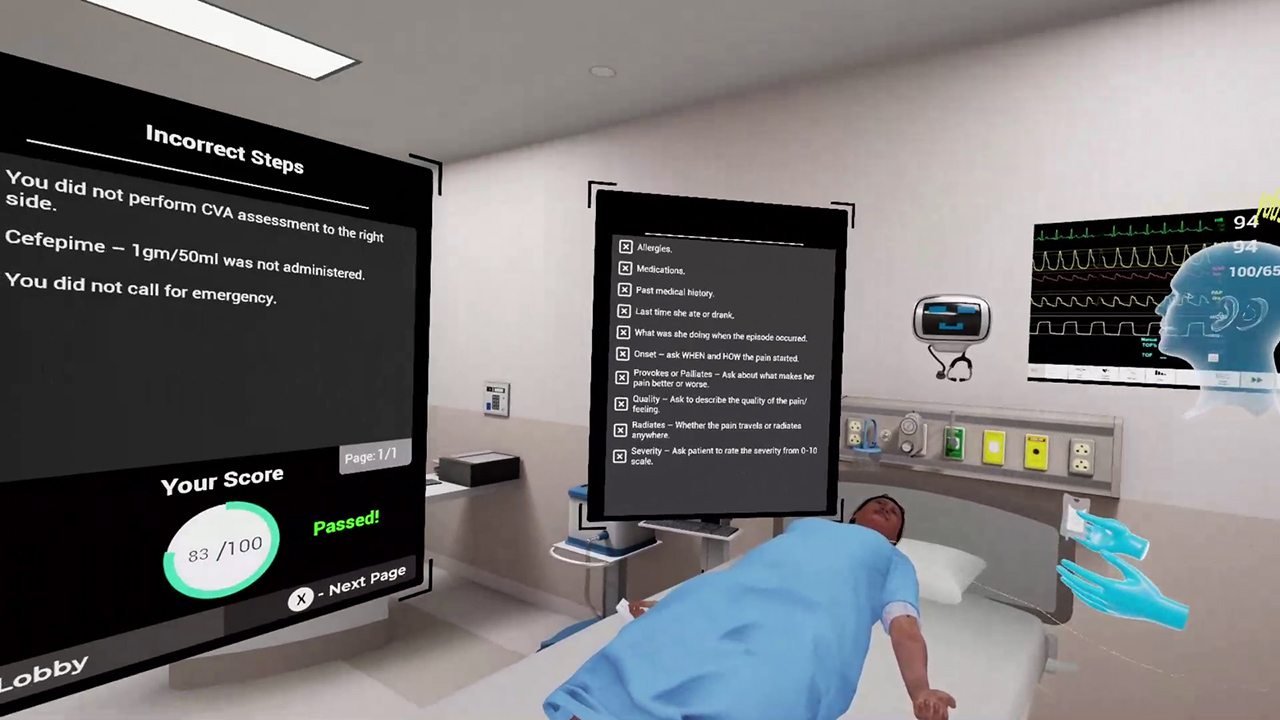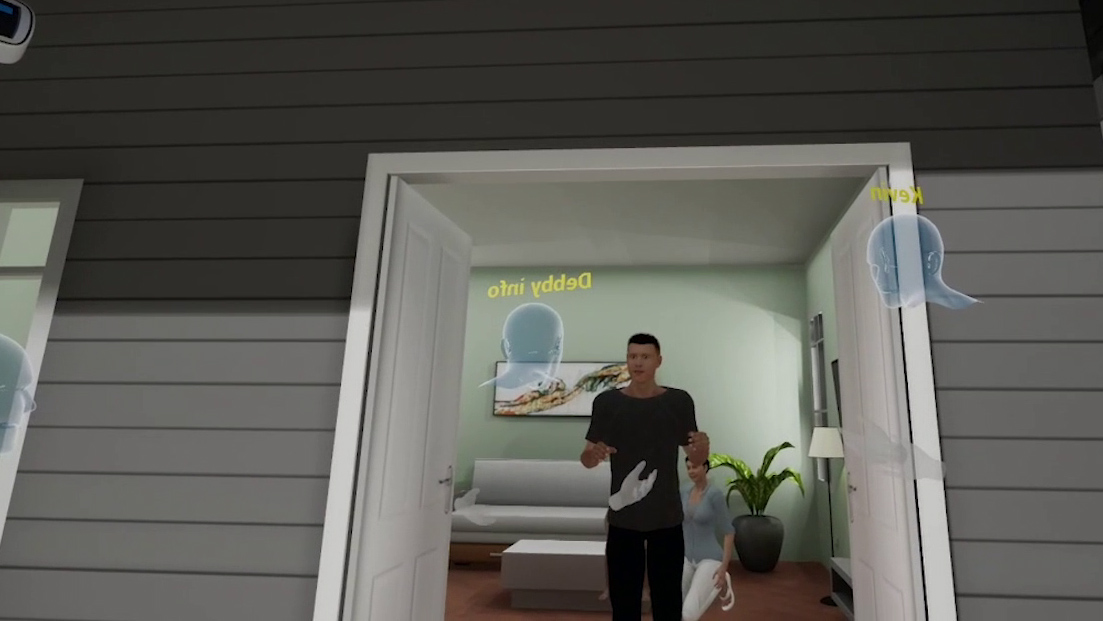You are in descent and the runway is in sight. You have initiated the deployment of the landing gear and . . . suddenly you notice a bird flying towards you. Distracted by the bird you fail to notice that the landing gear has developed a snag until you are almost over the runway. What do you do in such a situation? Thankfully, this is not real. You are part of a scenario-based learning session and there is no danger to the passengers, crew, and aircraft. At the same time, you know that this could happen in real-life. Bird hits are not very uncommon and so it is necessary to be prepared to handle such situations and maintain a calm composure.
What is scenario-based learning
Scenario-based learning (SBL) is an immersive learning environment where the learner is presented with challenges mimicking real-life situations. The learner is supposed to analyze the situation, think critically, and decide upon the next course of action to adopt. The outcome is the direct result of the decision made which serves as an instant feedback for the learner.
Unlike the traditional method of classroom learning or the more recent computer-based elearning courses, scenario-based learnings are more learner-centric. Significant characteristics of a scenario-based learning can be said to include the following:
- Courses are designed from the learner’s perspective
- Progress path of a course may vary from learner to learner
- Learning is non-linear with more than one feedback to a single problem at hand
- Each successive step is defined by decisions taken in the previous step
Types of scenario-based learning
Scenario-based learning material is still largely computer based but virtual reality (VR) is soon catching up with an increasing number of scenario-based trainings being developed in VR. The types of these sessions can be broadly categorized into two types – based on the learner’s role and the approach to the scenario.
Learner’s role: Depending upon the way a scenario-based learning is designed, the learner can play a first person’s role or a third person’s.
As a first person ‘player’ the learner is an integral part of the scenario and performs tasks and activities for oneself.
In the role of a third person, the learner can be a spectator to an ongoing scenario and assist the scenario characters in completing tasks.
Learning approach: Two broad approaches can be taken to design a scenario-based learning, depending upon the requirement of the content and purpose. There can be branching scenarios and open scenarios.
In a branching scenario, when decisions are to be made or steps to be taken, the learner is presented with a set of options/answers to choose from. Based on the choice made the next step is revealed. Each option may lead to a different result and eventually varying final outcomes. This final outcome serves as a feedback for the entire activity.
In open scenarios, the learner is free to explore a virtual environment, make autonomous decisions, and interact with objects. At the end of the session, a debriefing can be provided to help the user understand the consequences of the actions taken and improve upon shortcomings. This is particularly useful in tasks carrying high risks like healthcare and defense training.
Significance of Debriefing in Simulation-based VR Training

In an open scenario, users are free to explore their environment, take decisions and steer their learning journey.
Benefits of scenario-based learning
Organizations, ranging from the corporate world to the healthcare industry, are increasingly recognizing the significance of scenario-based learning and are working towards making it a part of their training efforts. Some of the very significant benefits of SBLs can be listed down as under:
Immersive: Being part of an environment gives the effect of belonging and when able to interact with and within that environment the rate of involvement increases many folds. This is exactly what happens in a scenario-based learning. The user is immersed in the environment and is able to learn and explore with zero-distractions. This fosters better learning and understanding.
Retention: The benefit of immersion leads to the added advantage of retention. Since SBLs have an immersive and experiential nature it automatically leads to promoting knowledge retention among learners. This in turn results in effective and efficient learning outcomes.
Cause and effect: With a scenario unfolding at every decision point, the learner is presented with cause and effect feedback. This helps the learner better comprehend the outcome of their decisions.
For example, a learner is expected to douse a fire using a fire extinguisher. If the learner has properly understood and learned the steps to operate a fire extinguisher the task can be performed efficiently. If not, the fire is going to rage, get larger, and difficult to manage.
Critical thinking: Scenario-based learning sessions provide learners the opportunity to look at one situation from multiple angles. Closely going over the problem, the steps taken to mitigate the issue and the eventual outcome helps the learner critically study their actions and reactions to situations. It also helps the learner better understand a given situation and what possible steps can be taken in each situation.
Experience building: Some jobs fall under the high-risk zone and practicing these tasks in real-life can be dangerous for amateurs. At the same time, practice is essential to gather experience. Scenario-based learning sessions, especially the ones in virtual reality, provide learners the opportunity to practice these tasks in zero-risk settings any number of times required. This not only provides practice to perfect the task but also the much-needed experience for confidence building.
Analyzing capability: When the user gets to witness and experience the outcome of a decision it helps the user analyze the actions taken. When faced with an accident victim, was it better to first attend to the victim and then call for help or should one have called for help before attending to the victim? The decision to be taken would largely vary depending upon the complexity of the situation, will help the user analyze the steps taken and consider what could have been done for a more favorable result.
Perspective development: A conversation with a prospective client can go in any direction. What first appears as a mere shortness of breath could or could not be a cardiac arrest. An approaching vehicle could or could not be the enemy. Every situation can have multiple aspects to it and professionals need to be ready to tactfully identify and handle every one of them. This can only be possible if the professional possesses a broad perspective. One way to do this is to be exposed to multiple outcomes of a given situation. Training in true-to-life scenarios helps achieve this ‘broad perspective’ approach to a situation and act or react accordingly.
Scenario-based learning can be implemented in various fields and can be used to train learners in multiple skills ranging from soft skills to high-risk ones like working on oil-rigs. With its immersive, engaging, and experiential nature of training learners not only learn better but also acquire the confidence to apply their knowledge in real-world situations.
Contact Us to create engaging and immersive online learning content or to know more about our immersive architecture.




